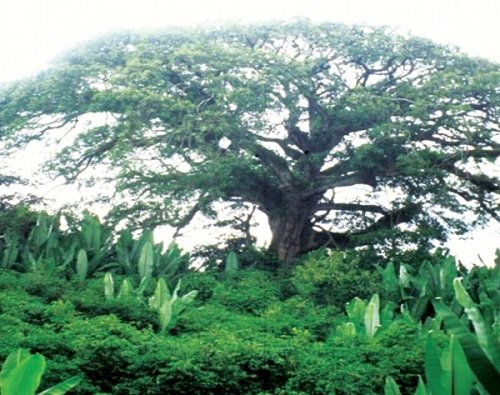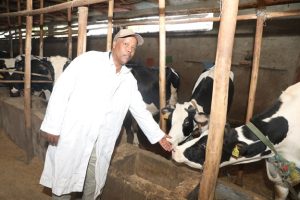
BY STAFF REPORTER
Food self-sufficiency is a hot global agenda at the moment. One of the ways to become self-sufficient in food supply is harnessing agricultural and/or natural resources. Having rich natural resource alone cannot guarantee food self-sufficiency as it needs knowledge or technology to harness it properly. In developing countries introducing advanced technology could be challenging as it requires a huge sum of financial investment as well as awareness of the use.
However, developing countries can still nurture and develop traditional knowledge in their respective culture to properly conserve their natural resources thereby promote their agricultural productivity and ensure food self-sufficiency.
Especially, promoting the traditional knowledge’s in the culturally diverse peoples of African countries would be helpful to develop the indigenous knowledge’s in general and those specifically applied in natural resource conservation and agricultural production.
“When there is cultural diversity there would be diverse indigenous knowledge like traditional conflict resolution mechanism, environmental protection, traditional medicine … etc. Safeguarding these knowledge helps in regional integration” says Awlachew Shumneka (PhD), language, culture and translation director with the Ministry of Culture.
The big issue here is at East Africa level we have to identify and develop our indigenous cultural assets rather than resorting to European knowledge. We also have knowledge and civilization. We have to use them for our development alongside other knowledge’s” Ethiopia is considered one of the most important biodiversity hotspots of the world, but also one of the most degraded country in tropics. In contrast, the country has a rich mix of ethnic, religious and mosaic cultural groups with diversified social, political and economic organizations. In Ethiopia, since several decades there has been progressive degradation of ecosystem resources.
Among the various nations and nationalities in Ethiopia, the Gedeo people are frequently mentioned as an example in their ages old exemplary practice of successful agroforestry. The Gedeo, an ethnic group in southern Ethiopia, have been using indigenous knowledge for different purposes, among which traditional agroforestry practices are prominent. Gedeo agroforestry practices are considered to be among the oldest agricultural systems, dating back to Neolithic times.
According to a study by Dilla University, the Gedeo developed the practices through the domestication of natural forest and intensification of agriculture, so that most of the woody species present in the area are indigenous. Gedeo land use is a modified forest rather than an agricultural system into which trees are re-incorporated and it represents one of well-established non-conventional systems of land management that incorporate trees that can be coined an agro-forestry system. This system tolerates wildlife in general and weedy herbaceous vegetation.
Gedeo traditional agroforestry composed of an assemblage of diverse, closely growing trees, shrubs, and annuals that form a seemingly unbroken vegetation cover. These agroforestry practices stand in lush, beautiful contrast to the treeless farmlands of much of the Ethiopian agricultural landscape. The practice is known to be an exemplary land-use system in the region. Nowadays, all members of the Gedeo community in the zone are practice at least a home-garden type of agroforestry, whereby subsistence crops are grown mixed with trees. Agroforestry is defined as land use systems which integrate trees and shrubs on farmlands and rural landscapes to enhance productivity, profitability, diversity and ecosystem sustainability.
Gedeo indigenous agroforestry is a self-reliant and resource-conserving land use system. The agroforestry practices have a high carrying capacity due to the high productivity of enset and judicious use of accompanying crops. The average land holding size of the agroforestry is about 0.7 hectares, and they support a very dense population of 500–1000 people per km2, in Wonago woreda population density reaches 1300 persons per km2. This put the area at first compared to Ethiopians national average of 72 persons /km2 so is far higher than in the rest of the nation and it is the highest rural population density in the whole of Africa.
As witnessed by the years old practice of the Gedeo people, agroforestry system has the potential to enhance soil fertility, reduce erosion and improve water quality. Furthermore, the presence of deep-rooted trees in the system can contribute to improved soil physical conditions and higher soil microbiological activities under agroforestry. Moreover, the hydrology of the system is well maintained and enhanced by reduced evapo-transpiration due to its canopy structure and pumping effect of trees. Study on Gedeo indigenous agroforestry practices demonstrated the ability of trees and shrubs, apart from optimizing the yields of diverse crop/tree species, regularly replenish soil fertility and productivity through continuous supply of organic matter and through protection from erosion and leaching. The annual litter-fall productions per unit area in Gedeo indigenous agroforestry systems, were considerably higher than reported for woody species in other agroforestry systems.
The high litter fall production of the traditional Gedeo agroforestry systems found account for the high productivity of these systems. Although much of the landscape of Gedeo is very steeply sloped, incidences of runoff and erosion are minimal because of the intact vegetation cover. Enset, which is lion share (in terms of coverage) of agroforestry, besides serving as a food plant, it provides mulching and maintenance of soil fertility and moisture. Enset has exceptional ability to suck up lot water in rainy seasons and store it in the stem and in drier season the enset plant will distribute the water to coffee plant and other nearby crops.
Ongoing agroforestry and natural resource conservation works in the country can build up on these experiences of the people. Currently various such campaigns are well underway in the country. Among them is the annual Green Legacy Initiative which is spearheaded by Prime Minister Abiy Ahmed (PhD) four years ago.
The initiative focuses on large scale afforestation throughout the country in a bid to increase the forest coverage of the country, promote environmental protection as well as to ensure food self sufficiency through widely planting edible fruit trees. Most of the edible fruit trees are well known and adaptable to the environment and ecosystem of the country. Therefore assisting the plantation and continuous protection of the agroforestry works is likely to succeed if it gives due consideration to the indigenous knowledge of the local people.
The Ethiopian herald June 21/2022




